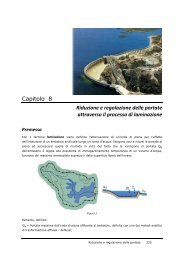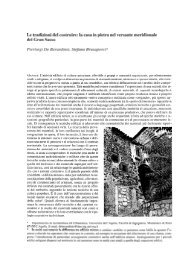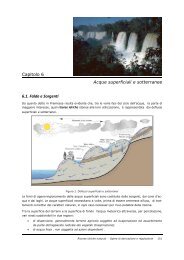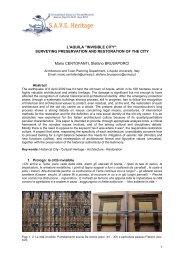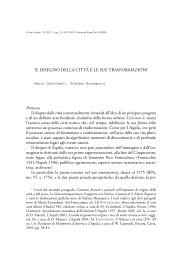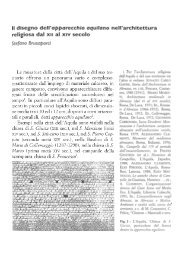Frammentazione ambientale, connettività, reti ecologiche
Frammentazione ambientale, connettività, reti ecologiche
Frammentazione ambientale, connettività, reti ecologiche
Create successful ePaper yourself
Turn your PDF publications into a flip-book with our unique Google optimized e-Paper software.
206 Reti <strong>ecologiche</strong><br />
blems, should be regarded as an original experiment from which ecology and landscape<br />
planning can draw new knowledge.<br />
Ecological levels and targets – Conservation strategies and ecological planning<br />
will depend on the a priori selection of sensitive targets, such as species, communities,<br />
ecosystems, or processes. Populations of individual species are easier, generally,<br />
to investigate compared to higher ecological levels and may be considered<br />
valid targets for evaluating the efficacy of corridors and ecological networks.<br />
Structural level - The structural level is the basis for designing an ecological<br />
network. Thematic maps and remote sensing allow us to analyze spatial structure<br />
and patterns of the landscape mosaics, identifying sensitive ecosystems, areas of<br />
anthropogenic fragmentation, gaps and corridors. The residual fragments can be categorized<br />
in accordance to type, size, shape, quality, isolation, spatial articulation,<br />
and functional relations to the matrix. The matrix itself can be analyzed on the basis<br />
of type, origin, degree of anthropization, as well as of ecological and spatial variables.<br />
Dynamic-functional level - The spatial pattern of the landscape may affect the<br />
flows of energy and matter as well as the biological dynamics. From the structural<br />
analysis, it is possible to point out some functional aspects: the landscape ecology<br />
provides the tools for a first evaluation of cause-effect relations between structure<br />
and function. However, the propedeutic structural analysis of the landscape may<br />
not correlate to a definition of its connective functionality for sensitive species:<br />
i.e., some species may be unable to disperse along apparently continuous areas for<br />
a structural analysis (because of, for example, the edge effect).<br />
Connectivity is a function both of a structural-cartographic component and of<br />
an eco-ethological, species-specific one. The different function (connective, neutral,<br />
or acting as a barrier) of the landscape elements for individual species will<br />
then be bound to both components. Consequently, a functional ecological network<br />
design must imply a species-specific approach of the structural patterns of<br />
the landscape.<br />
Some models have been proposed in order to take into account the ecological<br />
role of landscape elements in sensitive species dynamics, evaluating, theo<strong>reti</strong>cally,<br />
the relationships among patterns of distribution/abundance and patterns of landscape.<br />
The functionality of the structural patterns may be analyzed considering their<br />
role as habitat and/or corridors and of the minimal specific requirements for specific<br />
viable (meta)populations.



